2016 UMOWA Macroinvertebrate Report
On March 17, the Upper Missouri Watershed Alliance (UMOWA) published the results of the 2016 bug study performed by David Stagliano of Montana Biological Survey.
We are late in sharing the results, but with the UMOWA Annual Meeting coming up in Craig this Saturday, June 17th, I thought now might be a good time to summarize what was observed in 2016. If you would like to look at the whole report, it can be found in it’s entirety here.

Macroinvertebrates Observed
116 unique macroinvertebrate taxa were observed. Of these, 50 taxa were EPT taxa. EPT taxa are mayflies, caddisflies, and stoneflies. These groups of bugs are of particular interest to anglers.
Of these 50 EPT taxa, 22 were mayflies, 20 were caddisflies, and 8 were stoneflies.
The dominant mayfly taxa are Blue Winged Olives (Baetis tricaudatus), Tricos (Tricorythodes explicatus), and Pale Morning Duns (Ephemerella extrucians, previously Ephemerella inermis/infrequens).
The most dominant caddisfly taxa are the net spinning caddis, Cheumatopsyche, and the long-horned caddis, Oecetis. Caddisfly densities were usually much lower than mayfly densities.
Stonefly taxa were collected sporadically across all sites. Stonefly numbers and diversity increase with increasing distance from Holter Dam.
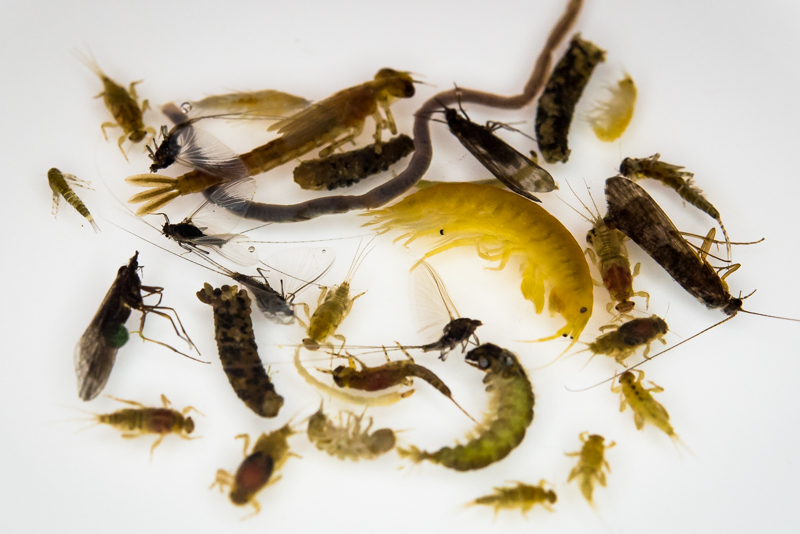
Seasonal Trends
Mayflies densities are highest in the spring. Following their hatching period, mayfly densities are lower in the summer. The summer samples were dominated by non-insect taxa like scuds, sowbugs, worms, and snails. Non-insect taxa also dominated the fall samples at most sites upstream of the Dearborn River and in weed beds.
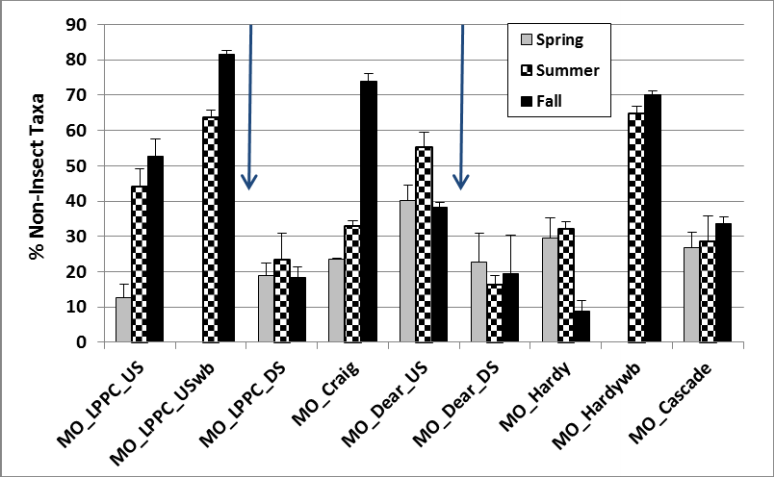
Spatial Trends
Bug densities are greatest upriver and decrease as you move closer to Cascade. The sample site upstream of the Little Prickly Pear confluence had the highest density of invertebrates of all sites averaging around 20,000 individuals per square meter.
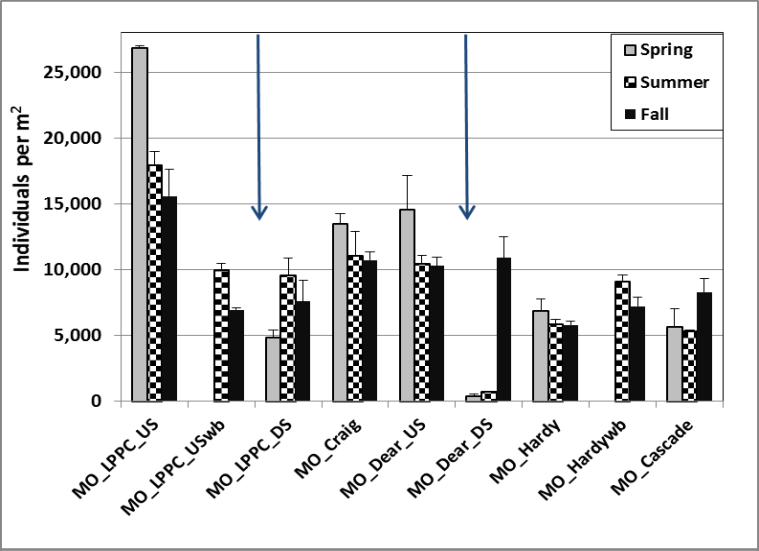
The diversity of taxa observed increases with increasing distance from Holter Dam. In other words, the further downstream you go, the more different bugs you find. For instance, there are four species of mayfly that were observed at the Cascade site and nowhere else.
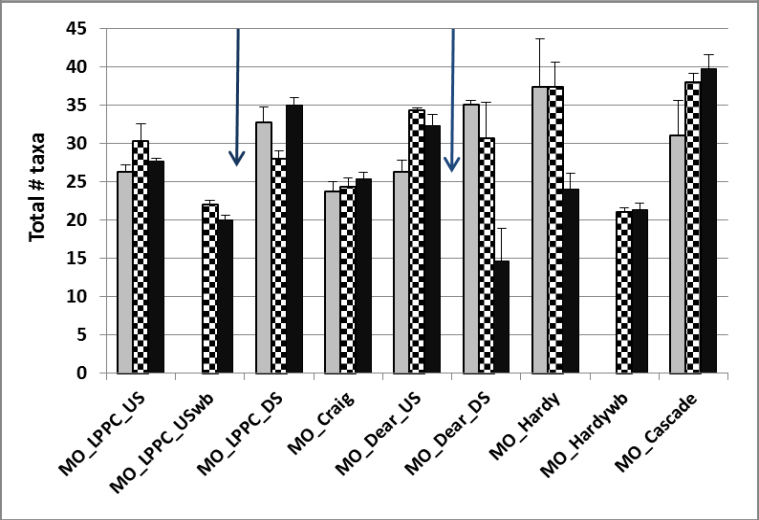
2015 vs. 2016
This is the second year that this study has been performed. Overall, the bug communities were similar between years, but with significant reductions in Chironomidae (midges) and percentage of EPT taxa (mayflies, caddisflies, and stoneflies) especially between Wolf Creek and the Dearborn River confluence. There were significant increases in the percentage of non-insect taxa (sowbugs, flatworms, and worms) in the same stretch of the river.
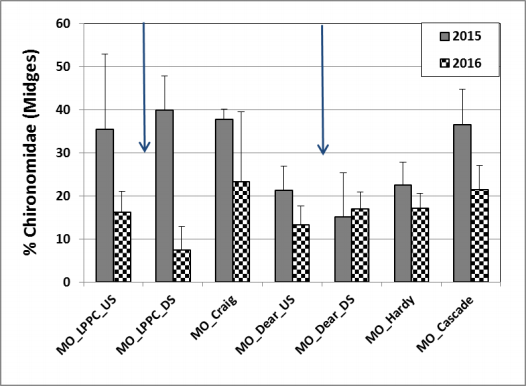
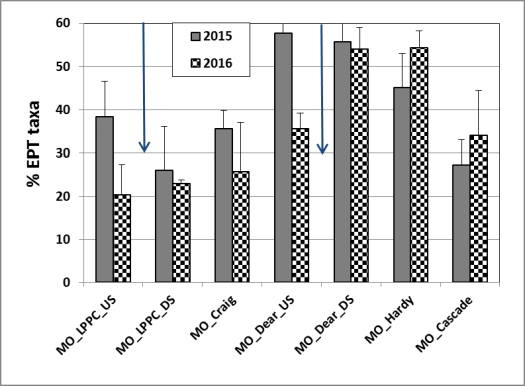
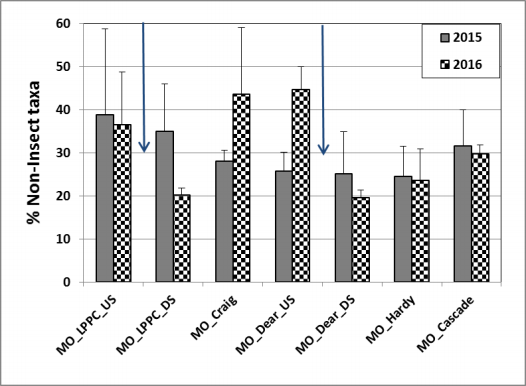
Sediment Build-Up
The change in community structure observed between 2015 and 2016 could be caused by increased sediment buildup. As sediment clogs sections of the river that used to be clean gravel, there is a shift in the aquatic community that favors non-insect taxa (scuds, sowbugs, snails, and worms). Increased sedimentation leads to increased aquatic vegetation growth which may decrease caddisfly habitat. These weeds are a nuisance to anglers in the late-summer/fall period.
Weed Beds
Aquatic weed beds are dominated by scuds, sowbugs, worms, snails, and damselflies. Although four mayfly species, including Callibaetis and Pseudocloeon, prefer this kind of habitat, the majority of mayflies, caddisflies, and stoneflies do not.
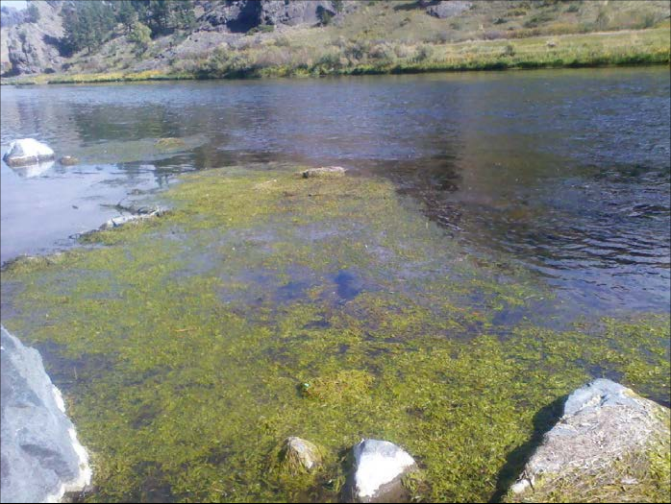
New Zealand Mudsnails
New Zealand mudsnails have been observed in the Missouri River at multiple sites in low densities. In 2016, their populations significantly increased upsteam of Craig. New Zealand mudsnail densities were highest at the sample sites directly upstream and downstream of Little Prickly Pear Creek. With this in mind, anglers should always inspect, clean, and dry their boats, wading boots, and other gear so they don’t spread these nuisance species to other bodies of water.
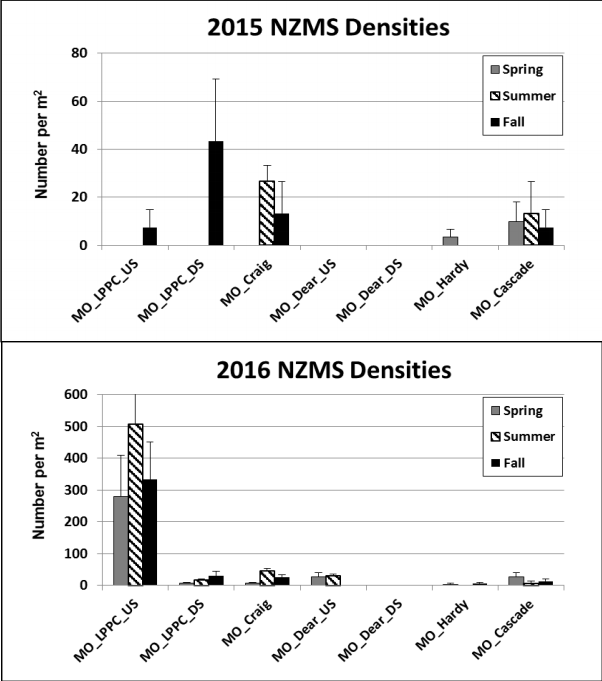

Case For Flushing Flows
Davis Stagliano concludes the macroinvertebrate report with the following:
We postulate that NZMS population increases, overall non-insect macroinvertebrate density increases, caddisfly decreases and the expansion of rooted weed-beds in the Wolf Creek to Craig section is directly correlated with lower spring flushing flows from Holter Dam.
We recently republished and discussed UMOWA’s case for flushing flows. It will be very interesting to see what impact the higher flows we experienced this spring and summer will have upon the aquatic community structure. The greatest strength of a long-term dataset is the ability to examine changing conditions across years. Hopefully UMOWA will continue collecting baseline macroinvertebrate data for years to come.
UMOWA Annual Meeting
The UMOWA Annual Meeting is this Saturday, June 2017 from 6:00 to 9:00 PM in the Craig Firehall.
There will be free food, a silent auction, and lots of information about the current state of the Missouri River. If you thought this post was interesting, you should plan on attending!


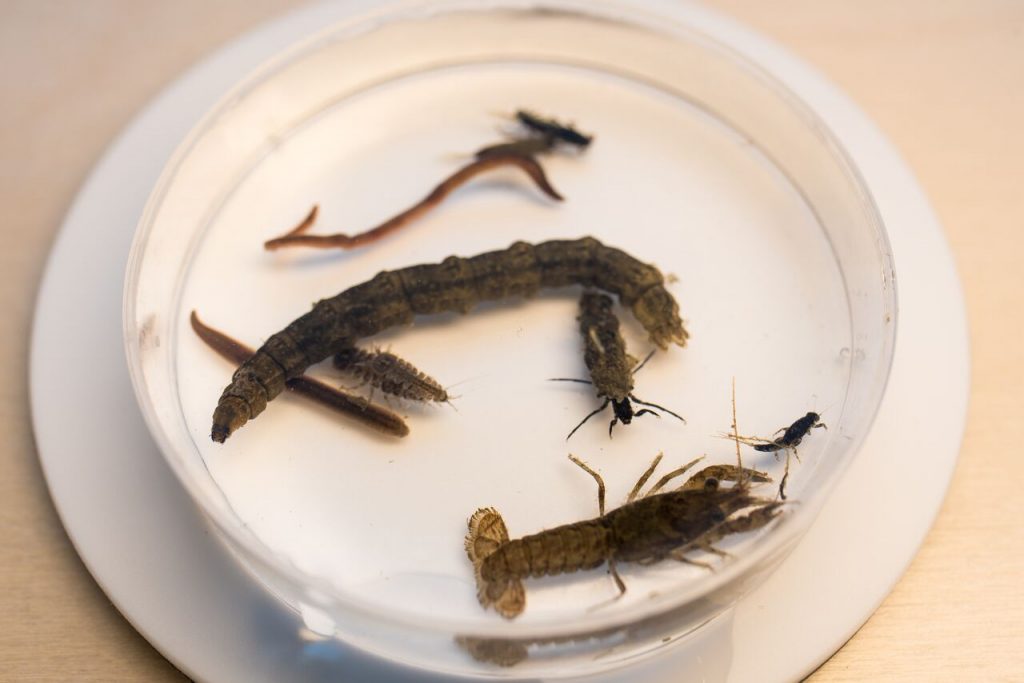

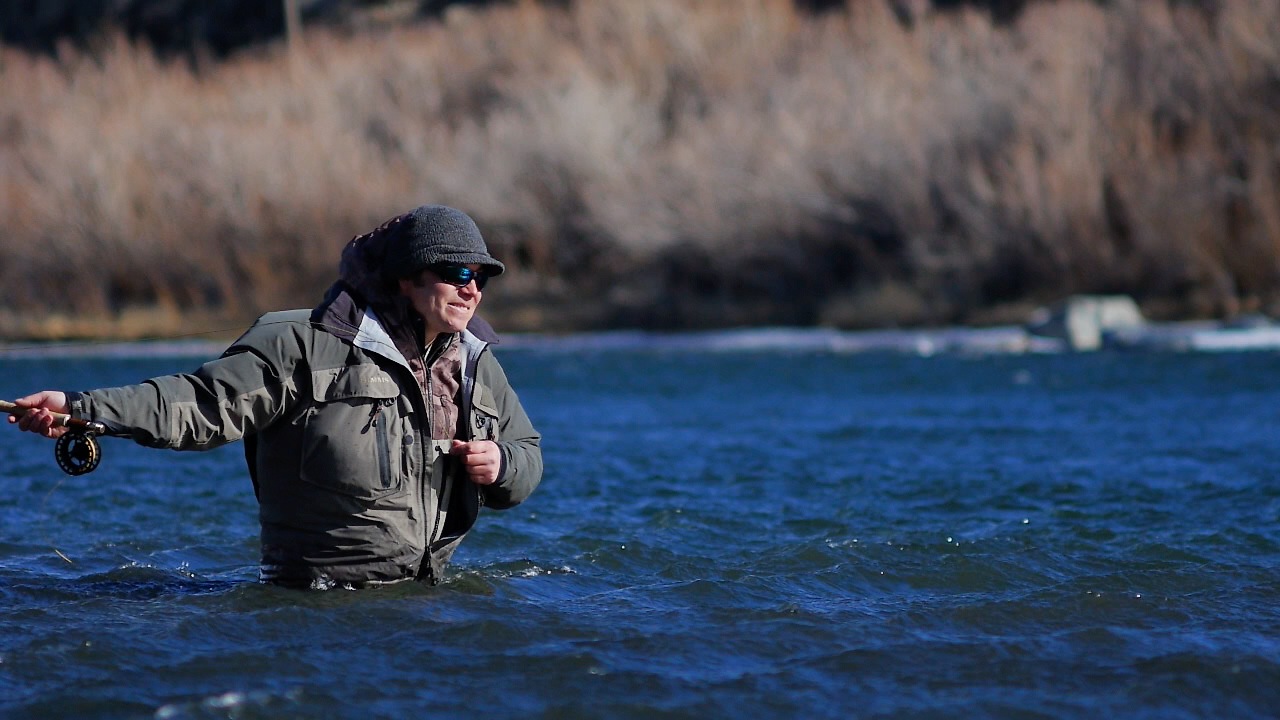
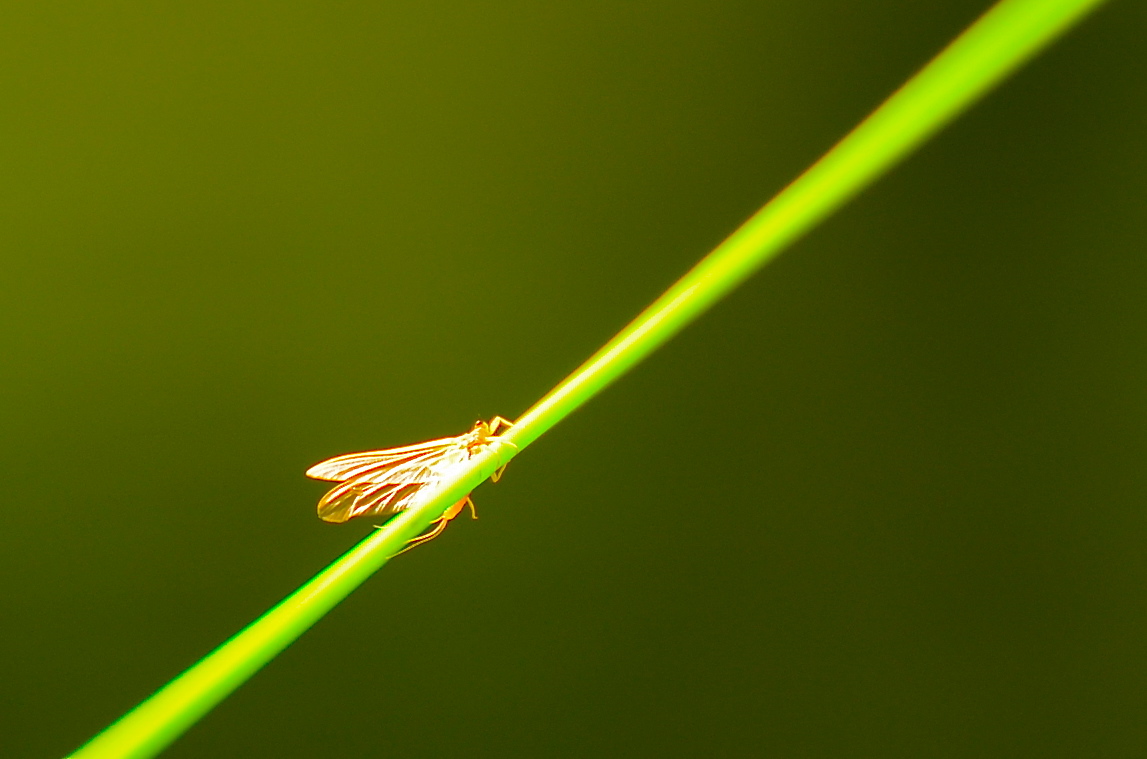

3 Comments.
Well written and great facts. Worth reading for sure. See you at the meeting Saturday night.
Awesome!
Yeah Braden, thanks for the info!